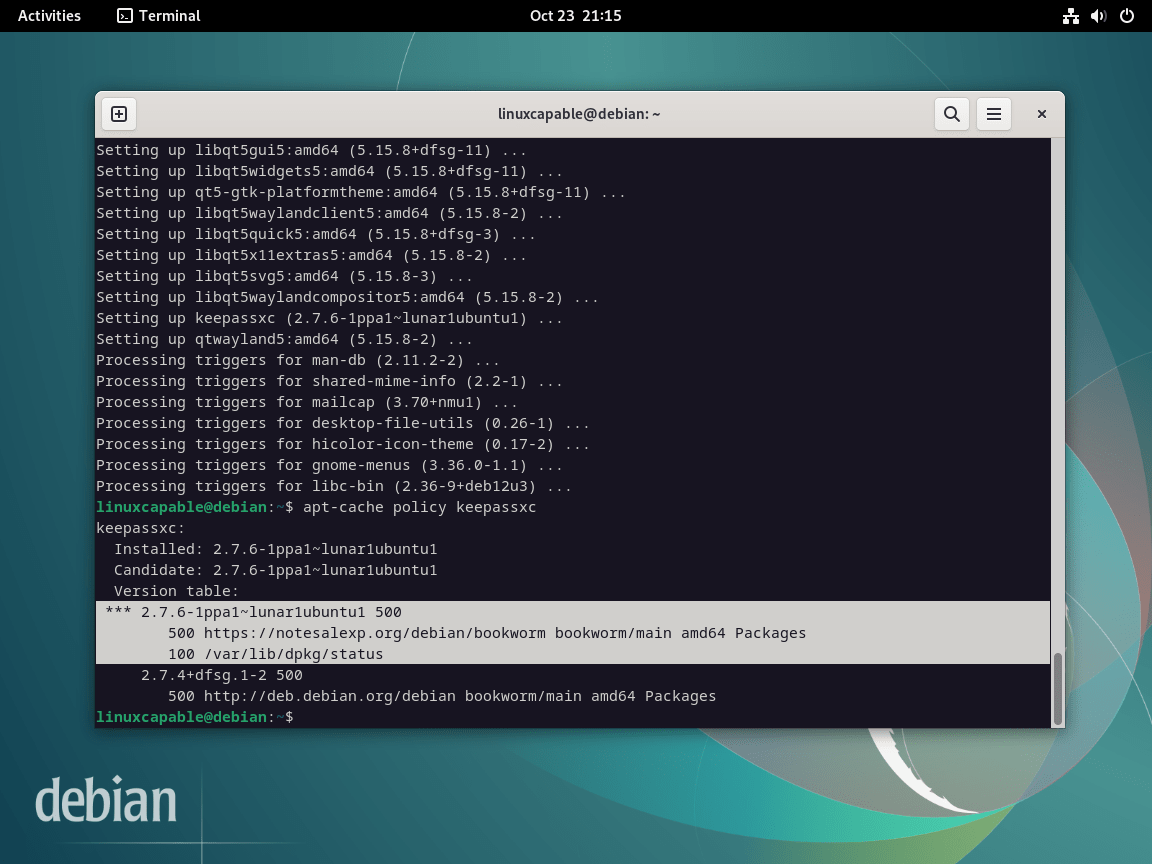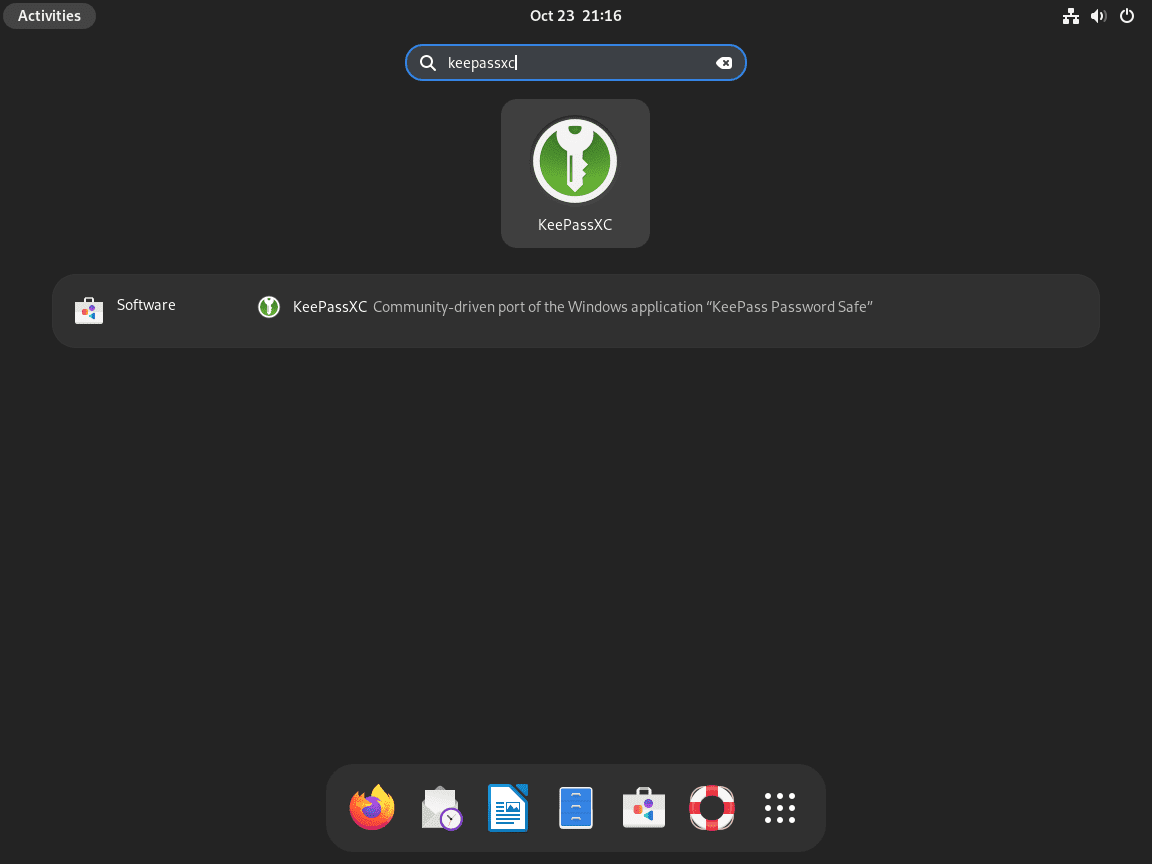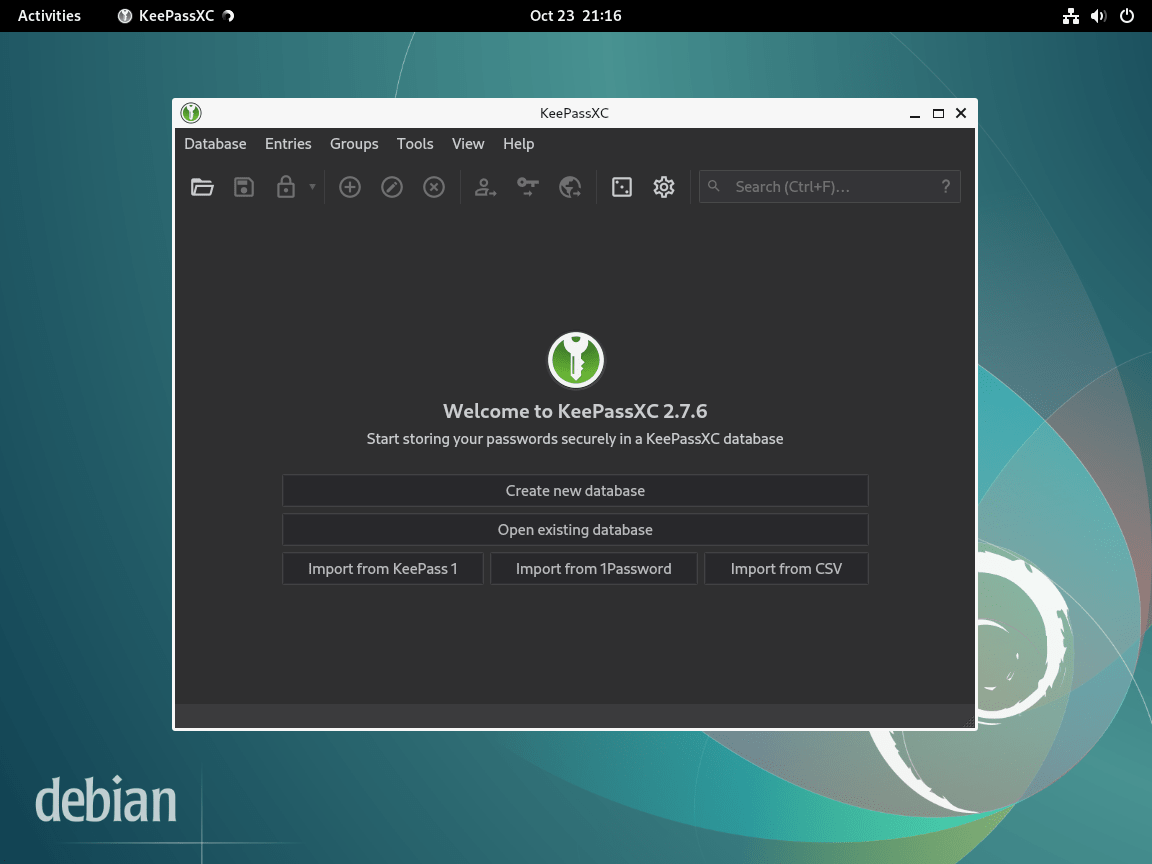In data security, KeePassXC emerges as a robust solution for those prioritizing the safety of their credentials. For Debian users, the prospect of integrating KeePassXC becomes even more compelling.
Diving into KeePassXC’s Features:
- Cross-Platform Compatibility: KeePassXC’s design ensures seamless operation across various operating systems, enhancing its appeal to a diverse user base.
- Open Source Integrity: Published under the GNU General Public License, KeePassXC champions transparency and freedom, allowing users to access, modify, and distribute the software without constraints.
- KeePass Compatibility: With a database format that aligns with KeePass, transitioning data between the two applications is hassle-free.
- Advanced Security Measures: Beyond merely storing passwords, KeePassXC offers features like database encryption using a master key and the generation of robust passwords, fortifying your data’s security.
- Extensibility: KeePassXC’s support for plugin development means users can augment the application’s capabilities, tailoring it to their needs.
Given its comprehensive suite of features and unwavering commitment to user security, KeePassXC stands out as a premier choice for password management. As we delve deeper, this guide will provide a step-by-step walkthrough for integrating KeePassXC into your Debian system.
Install KeePassXC APT Methods
Update the Debian System Before KeePassXC Installation
Ensuring that your system is up-to-date is paramount. An updated system mitigates potential installation hiccups and aligns with best practices. To achieve this, run the following command:
sudo apt update && sudo apt upgradeSelect KeePassXC APT Installation Method
Option 1: Install KeePassXC from Debian’s Default APT Repository
For those who value stability in their software, KeePassXC Password Manager comes pre-packaged in the Debian repositories. This installation route is tailored for satisfied users with a stable version and doesn’t need the most recent updates. To install using this method:
Open your terminal and execute the command:
sudo apt install keepassxcSee the following method for those who prefer the newest version and do not mind importing a third-party PPA.
Option 2: Install KeePassXC via PPA
For tech enthusiasts eager to get the newest version of KeePassXC, leveraging a third-party repository is the way to go. Alexander Pozdnyakov maintains a reputable third-party repository that’s worth considering.
Start by installing some essential packages that will facilitate the PPA addition:
sudo apt install dirmngr software-properties-common apt-transport-https curl lsb-release ca-certificates -ySafety first! It’s prudent to authenticate the packages you’re about to install. Thus, the next move involves importing the GPG key to ensure the packages’ authenticity:
curl -fsSL https://notesalexp.org/debian/alexp_key.asc | gpg --dearmor | sudo tee /usr/share/keyrings/alexp_key.gpg > /dev/nullBefore diving into the installation, ensure your package lists recognize this new repository:
echo "deb [signed-by=/usr/share/keyrings/alexp_key.gpg] https://notesalexp.org/debian/$(lsb_release -sc)/ $(lsb_release -sc) main" | sudo tee /etc/apt/sources.list.d/alexp.listBefore you continue, run an APT update to reflect the newly imported PPA.
sudo apt updateWith everything set, it’s time to install the KeePassXC Password Manager:
sudo apt install keepassxcFor the curious minds, if you ever wonder about the installed version of KeePassXC, here’s a handy command:
apt-cache policy keepassxc
Launch KeePassXC
CLI Command to Launch KeePassXC
For those who frequently use the terminal, KeePassXC provides a straightforward command to launch the application. Enter:
keepassxcGUI Method to Launch KeePassXC
The majority of users may find the desktop interface more familiar and user-friendly. If you belong to this category, accessing KeePassXC is just as uncomplicated:
Activities > Show Applications > KeePassXC


Additional Commands For KeePassXC
Update KeePassXC
Your KeePassXC installation method determines how you should update it. Suppose you’ve installed KeePassXC using the standard Debian repositories or a third-party repository like the one maintained by Alexander Pozdnyakov. In that case, you can refresh the package lists and upgrade the application using:
sudo apt upgrade && sudo apt upgradeRemove KeePassXC
If, for any reason, you decide that KeePassXC no longer meets your requirements, removing it from your Debian system is straightforward.
To uninstall the KeePassXC application:
sudo apt remove keepassxcRemoving the repository reference from your system is a good idea if you decide not to utilize any other software from Alexander Pozdnyakov’s repository. This ensures that you don’t unintentionally pull updates or other software from it in the future:
sudo rm /etc/apt/sources.list.d/alexp.listNote: If you’ve installed other applications from this repository, refrain from removing them. If you inadvertently remove the repository and need to re-add it, you can refer to the earlier instructions in the tutorial.
Conclusion
KeePassXC is an exemplary tool, especially for individuals who prioritize data security. Its cross-platform compatibility ensures that it can be deployed across different computer systems. The intuitive interface, coupled with the fact that it’s open source and freely accessible, underscores its appeal to those who seek both convenience and robust security.
Useful Links
Here are some valuable links related to using KeePassXC:
- KeePassXC Official Website: Visit the official KeePassXC website for information about the password manager, features, and download options.
- KeePassXC Documentation: Access comprehensive documentation for detailed guides on installing, configuring, and using KeePassXC.
- KeePassXC Screenshots: Explore screenshots for a visual overview of KeePassXC’s user interface and features.
- KeePassXC GitHub Repository: You can access the KeePassXC GitHub repository to view the source code, report issues, and contribute to development.
- NotesAlexp Repository: Explore the NotesAlexp repository, which contains KeePassXC and many other packages you may be interested in installing built directly on specific Debian release versions.


